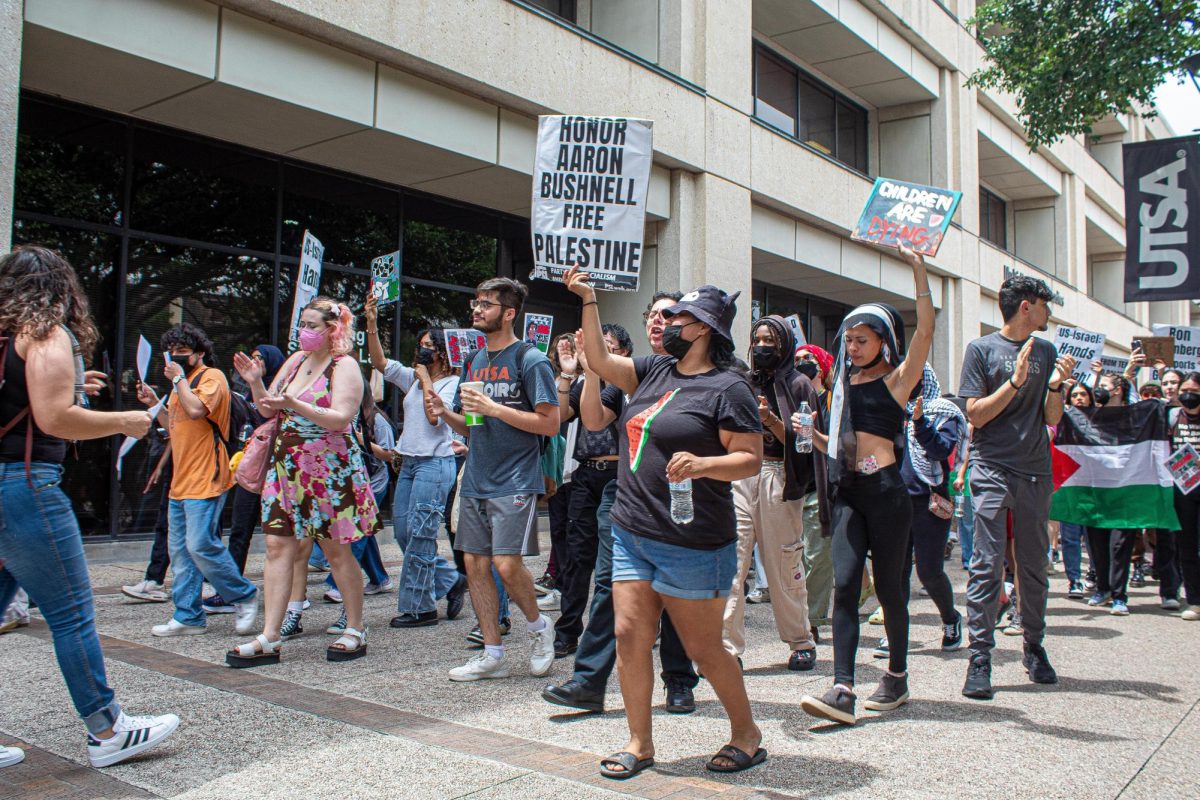

Photo Courtesy of Mohamed Saeed
On June 30, hundreds of thousands of Egyptians took to the streets to demand the ousting of the democratically elected President Mohamed Morsi. Middle-class Egyptians had grown frustrated over the government’s failed effort to solve Egypt’s impending social and economic problems.
The country has seen political instability since the ouster of longtime dictator Mohamed Hosni Mubarak in February 2011. Morsi took office on June 30, 2012 after a transition period lasting for a year.
The protest was called on by a group known as “Tamarod,” or “Rebel.” This grassroots movement gathered 22 million signatures calling for Morsi’s resignation. The leaflets stated “Tamarod Campaign: Vote of No Confidence in Mohamed Morsi el ‘Ayat: Because public safety has yet to return, we do not want you…. Because the economy fell, we do not want you.”
The signatures were seen as a large enough mandate to force Morsi to step down. He won the 2012 election by a margin of 3.2 percent, or approximately 700,000 people, with an electorate of 40 million.
“We went out because we can’t handle it anymore,” said Ahmed El Mohamady, 21, who was one of the millions who signed the “Rebel” petition. “There’s no gas, no electricity, no money. (Morsi) has gone back on every promise he made before he was elected. He has to go.”
It was evident that Morsi and his government had done nothing to end any of the Mubarak-era human rights abuses or to reform the interior ministry and its brutal, repressive and corrupt police force.
The economy suffered, too, as inflation and unemployment reached record highs. The country’s tourism industry, which once accounted for 11 percent of GDP, suffered tremendously, as political unrest chased away tourists and investors. Foreign reserves had dwindled to near inexistence.
The staggering economy affected all walks of life among Egyptian society, as the country saw major power cuts, which lasted up to 12 hours. There were also major diesel and gasoline shortages, forcing commuters to queue for hours. Basic foodstuffs such as bread, sugar and rice were at their highest prices in history.
The Brotherhood’s rhetoric was becoming increasingly one-sided, frequently alienating any critics– even parties with similar ideologies. The Brotherhood also used religion as a means for political gain. Oftentimes, Brotherhood members would question the faith of those who opposed the government.
On July 1, Colonel General Abdelfattah el Sisi, the head of the Supreme Council of the Armed Forces (SCAF), gave a speech in which he laid out a 48-hour ultimatum: the president must either resign or “face the consequences.” He added that the country would be protected from “thugs, liars and terrorists.”
Forty-eight hours later, the government was overthrown via coup d’état, and hundreds of political figures were arrested. These included leaders of the Muslim Brotherhood Mohamed Badi, Mohamed Mahdi Akef, Khairat el Shater, Prime Minister Hisham Qandeel and the president himself, whose whereabouts are still unknown.
Also arrested were presenters of private television stations owned or affiliated with the Brotherhood or their political wing. Egypt’s constitutional court chief justice, Adly Mansour, now heads the country as interim president.
On July 4, after the extremely popular overthrow, clashes between anti-coupe and anti-Morsi mobs ensued, causing at least 100 deaths.
Days later, a bomb exploded in the city of Mansura, killing one policeman and injuring 19 other officers. No organization claimed responsibility for the attack. On July 24, General Sisi made a speech in which he called for mass protests against “terrorism.” Estimates vary, but on July 27, thousands of people filled the streets of Egypt’s major cities. The following day, 84 pro-Morsi protesters were killed and 299 injured in Cairo’s Nasser City.
“We didn’t have enough places in the fridges to fit all the bodies,” Dr. Hazem Hossam, an official at Zenhom morgue, told The Guardian newspaper. The army claimed they were following the people’s demands and, again, claimed they were provoked.
In between these massacres, there were reports of violent clashes between pro- and anti-Morsi protesters across the country. Casualty numbers remain unknown.
On Aug. 11, the Egyptian government vowed to clear the pro-Morsi protest center at Rabia al Adaweya mosque. There was also a massive spike in attacks on Coptic Christians and their churches.
From Aug. 11 to August 17, over 35 churches were burned completely. The Brotherhood distanced itself from these acts; however, the camp at Rabia has had an increasingly antagonistic rhetoric against Egypt’s Coptic Christian population. This has led many Morsi supporters to blame the Christian minority for the coup d’état.
As a gesture of defiance, Brotherhood leaders called for a peaceful “Friday of Defiance” protest on Aug. 15. Thousands again marched to Rabia square, and other pro-Morsi hubs. The protesters were met with army tanks and armed soldiers.
“As we approached the bridge by the local police station, three armored vehicles arrived. We did nothing to stop them. On top of the bridge army men appeared, all armed. The men then began firing. In the first minute, ten were dead and most were shot in the head. I was shot in the shoulder from the same bullet that had just exploded the head of the man in front of me.” explained Mohamed Saeed about the events that occurred at the bloodbath in Ali ibn Abi Talib mosque in Alexandria’s Sammoha district.
“We then marched onward to the nearest hospital. As we marched, another ten fell dead around me and about another thirty were shot. We were then refused treatment by the local hospital. I was then left helpless.”
Saeed is now on the run from the Ministry of the Interior, who is seeking to arrest him for publishing photographs of the massacre.
The Ministry of Health estimated the death toll at 638, and at 3,994 injuries. As a result of the carnage, Vice President and Nobel Laureate Mohamed El Baradei resigned. The army and police continue their crackdown against Brotherhood protests.











